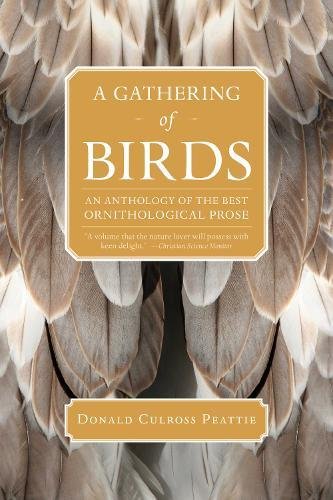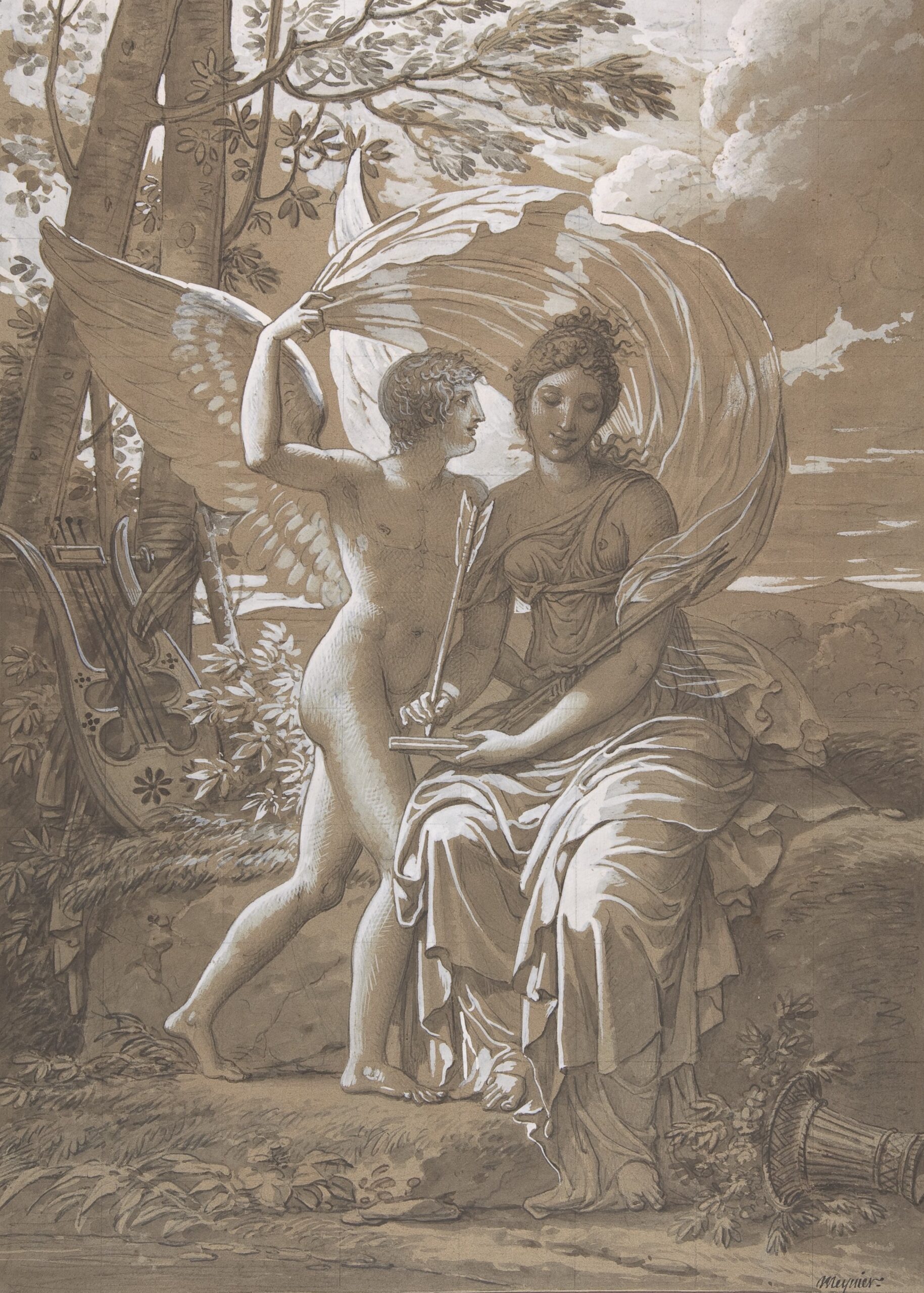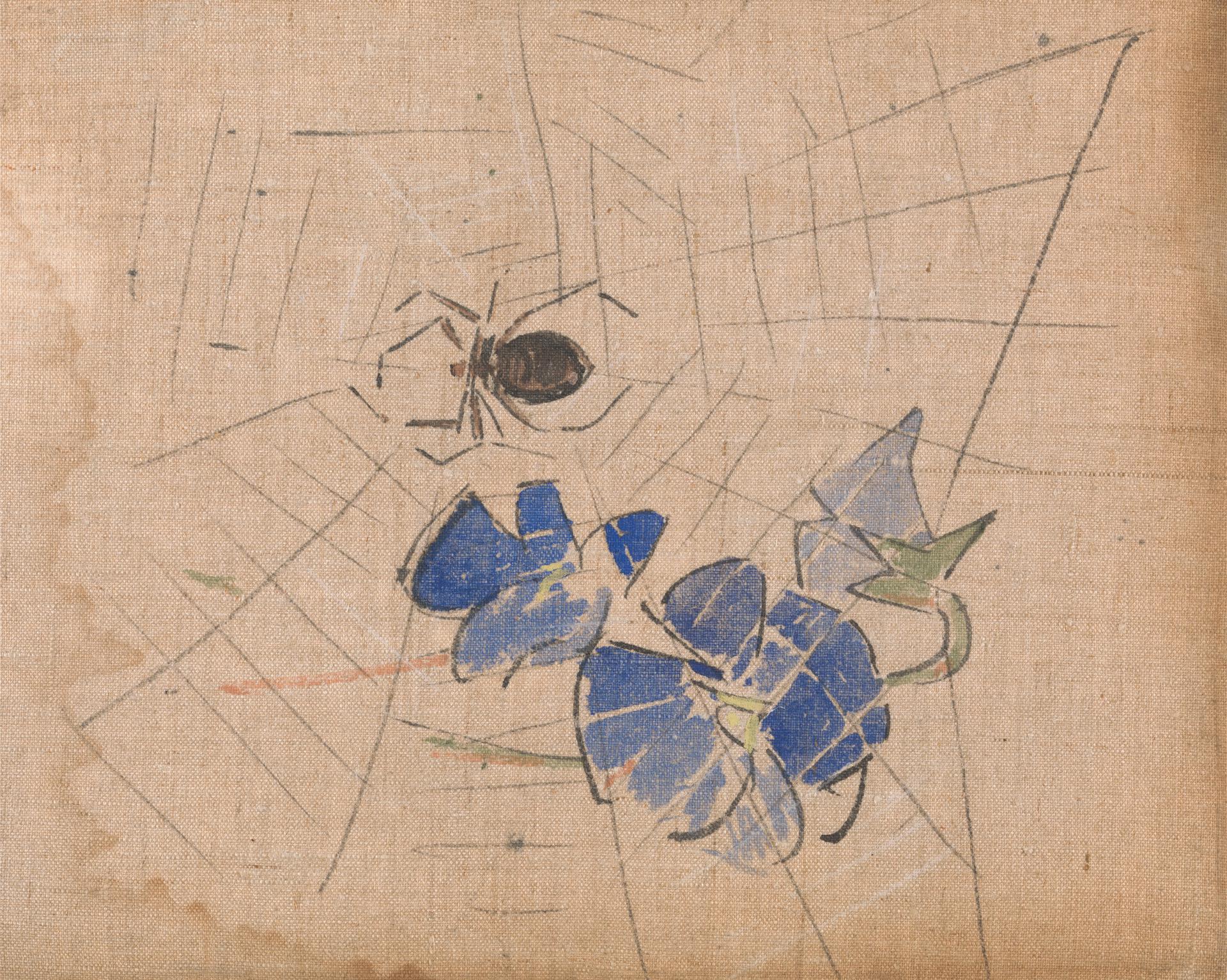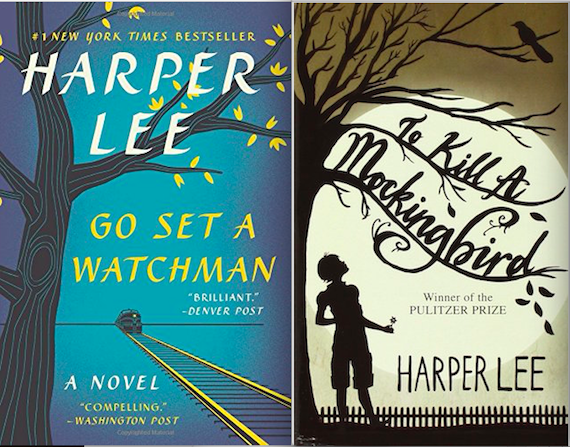
When Harper Lee’s Go Set a Watchman was published last summer, fans were disturbed at its depiction of Atticus Finch, which seemed to warp an iconic hero of American fiction beyond recognition. Go Set a Watchman shows Atticus as a hidebound defender of Southern tradition who mingles with white supremacists — a far cry, many felt, from the lawyer and family man who took a courageous stand against racism in To Kill a Mockingbird.
We might have been less surprised by the unsavory aspects of Atticus’s character, however, if we paid closer attention to the birds in Lee’s work. Animals are central to the novel’s message; this is, after all, the story of a family of Finches whose protracted battle against Jim Crow is captured in a metaphor about mockingbirds. A better understanding of the cultural significance of the birds in the book suggests what so many readers otherwise miss: that Atticus’s noble actions are inseparable from his investment in the romantic glory of the American South.
The phrase “to kill a mockingbird” comes from a bit of fatherly advice that Atticus delivers to his children, Scout and Jem. When they receive a pair of air rifles as a gift, Atticus lays down some strange rules about how to use their weapons responsibly: “Shoot all the blue jays you want, if you can hit ‘em, but remember it’s a sin to kill a mockingbird.” Why it is acceptable to shoot blue jays, but not mockingbirds? Miss Maudie, a neighbor, tries to clarify:
‘Your father’s right,’ [Miss Maudie] said. ‘Mockingbirds don’t do one thing but make music for us to enjoy. They don’t eat up people’s gardens, don’t nest in corncribs, they don’t do one thing but sing their hearts out for us. That’s why it’s a sin to kill a mockingbird.’
Miss Maudie’s explanation helps direct Scout’s developing moral understanding. For Scout and for the novel’s many young adult readers, killing mockingbirds becomes shorthand for any gratuitous violence directed at innocent, unassuming individuals like Tom Robinson.
Yet there is something off about Miss Maudie’s explanation. As any amateur birder could tell you, mockingbirds are neither innocent nor unassuming. Although it’s true that they don’t destroy seed crops the way a jay might, mockingbirds are hardly models of civility themselves. Like jays, they have a variety of abrasive, grating calls. Their songs can be melodious, but they can also be infuriating; they consist of snippets of other sounds repeated multiple times at high volume. These snippets may include borrowed birdsongs, door hinges, car alarms, or any other ambient noise. They perform these soliloquies all day and often deep into the night.
 Another trait mockingbirds share with jays is aggression. What sets the mockingbird’s aggression apart from the jay’s, however, is a tendency to extend its ferocity to almost any species. Mockingbirds happily attack all “intruders” unlucky enough to stumble into their supposed territory. As Mark Cocker notes in his encyclopedic Birds & People:
Another trait mockingbirds share with jays is aggression. What sets the mockingbird’s aggression apart from the jay’s, however, is a tendency to extend its ferocity to almost any species. Mockingbirds happily attack all “intruders” unlucky enough to stumble into their supposed territory. As Mark Cocker notes in his encyclopedic Birds & People:
They are well known for fiercely defending their nests and young from all comers including humans, but also from birds of prey, cats, raccoons and snakes. Sometimes the species extends these violent assaults to almost any small bird straying into its territory…Mockingbirds are sometimes so aggressive they can even kill snakes by pecking out their eyes.
In short, the mockingbird is a remarkable animal, but not exactly an ideal neighbor. Nevertheless, Atticus’s preference for it is so pronounced that it leads him afoul of the law.
Atticus’s advice to his children actually condones what an accomplished lawyer should have recognized as a federal offense. Since the passage of The Migratory Bird Treaty Act of 1918, it has been illegal “to pursue, hunt, take, capture, kill, attempt to take, capture, or kill…any migratory bird” in the United States. Under this statue, both the Blue Jay and the Northern Mockingbird qualify as migratory birds; shooting either one is punishable by fines of up to $500 or up to six months imprisonment. Yet Atticus takes the trouble to draw nice distinctions between species to clarify what sorts of crimes his children can commit with a clear conscience. If the law does not discriminate between blue jays and mockingbirds, why does Atticus Finch?
The answer lies in the Northern Mockingbird’s unusual place in American cultural history. The mockingbird has an elaborate literary pedigree, one that stretches across the Atlantic through the bird’s longstanding association with the European nightingale. That relationship helped enshrine the mockingbird as a symbol of the faded magnificence of the American South — a meaning it retains to this day.
The mockingbird’s rise to prominence began with the Romantic movement. In the late-1700s, a number of writers, artists, and intellectuals sought to escape the corruption of European society through a return to nature. In the process, they founded what is now known as the Romantic movement. As they praised nature in poetry, painting, and music, the Romantics sometimes singled out particular species for special symbolic significance. One species beloved by the Romantics was the Common Nightingale.
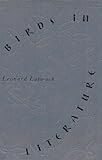 To the Romantic poet John Keats, the Common Nightingale was anything but common. As Leonard Lutwack points out in his study of Birds in Literature, admiration for the nightingale’s song dates back to Ancient Greece. The bird’s beautiful music — and its classical associations — awed Keats. His 1820 “Ode to a Nightingale” depicts the bird as enviably happy, the symbol of a golden age in Western Civilization lost to modern man. The nightingale’s music contrasts sharply against the song of the melancholy modern poet; as night falls and the poet’s vision fails, the bird warbles “of summer in full-throated ease,” spurring its lonely listener to meditate on the grandeur of “ancient days” and pine for “the warm South” of the Mediterranean.
To the Romantic poet John Keats, the Common Nightingale was anything but common. As Leonard Lutwack points out in his study of Birds in Literature, admiration for the nightingale’s song dates back to Ancient Greece. The bird’s beautiful music — and its classical associations — awed Keats. His 1820 “Ode to a Nightingale” depicts the bird as enviably happy, the symbol of a golden age in Western Civilization lost to modern man. The nightingale’s music contrasts sharply against the song of the melancholy modern poet; as night falls and the poet’s vision fails, the bird warbles “of summer in full-throated ease,” spurring its lonely listener to meditate on the grandeur of “ancient days” and pine for “the warm South” of the Mediterranean.
Although they were separated from the main currents of Romanticism by the Atlantic, American writers welcomed the new cult of nature worship. After all, the Romantic fondness for wild places promised to redeem America’s sprawling tracts of uninhabited land, recasting the new country’s wastes and deserts as sources of cultural pride. There was only one problem: the iconic species featured in so many Romantic poems — nightingales, song thrushes, skylarks — were Old World species, confined to Eurasia and Africa. In order to adapt Romantic nature worship to their national landscape, American writers needed to find native species that could stand in for their more storied European cousins. They needed creatures that would tap into the glories of Old World traditions, but that remained distinct enough to symbolize the natural purity and power unique to the American continent.
 Luckily, European explorers and naturalists had already begun that work for them. A glance through the ornithological writings collected in Donald Culross Peattie’s A Gathering of Birds, for example, shows foreign-born writers freely equating the species they encountered in the New World with better-known ones back home. So, the 19th-century Englishman Thomas Nuttall begins his writings on the Northern Mockingbird by immediately equating it to a European counterpart. He repeatedly characterizes its appearance (drab plumage) and behavior (nighttime singing) as “like the Nightingale.” Both the jarring mockeries of the mockingbird’s song and its unpredictable aggressions are softened by this comparison to a more timid, musical corollary from the Continent.
Luckily, European explorers and naturalists had already begun that work for them. A glance through the ornithological writings collected in Donald Culross Peattie’s A Gathering of Birds, for example, shows foreign-born writers freely equating the species they encountered in the New World with better-known ones back home. So, the 19th-century Englishman Thomas Nuttall begins his writings on the Northern Mockingbird by immediately equating it to a European counterpart. He repeatedly characterizes its appearance (drab plumage) and behavior (nighttime singing) as “like the Nightingale.” Both the jarring mockeries of the mockingbird’s song and its unpredictable aggressions are softened by this comparison to a more timid, musical corollary from the Continent.
When they sought to construct their own natural iconography, then, American writers like Walt Whitman had such associations ready-to-hand. Oceans may have divided Whitman’s Long Island from Keats’s Hampstead and Homer’s Greece, but Whitman could still frame his poetic engagement with nature in familiar terms, because he, too, found inspiration in solitary encounters with birdsong at night. Whitman’s “Out of the Cradle Endlessly Rocking” depicts the poet as a boy, wandering the shore and listening to a bird sing mournfully in the darkness. The experience moves Whitman as it moved Keats and the Greeks before him. In Whitman’s case, though, the conventional nightingale is replaced by the American mockingbird, which sets the young boy on his path to develop a uniquely American literary voice.
 The final fruit of that effort was Whitman’s oft-revised masterpiece, Leaves of Grass. Composing this collection of national poetry entailed treating the United States as, well, united. But “Out of the Cradle Endlessly Rocking” first appeared in 1859, when tensions over slavery were tearing the young nation apart. Whitman was a Northerner who would go on to champion Abraham Lincoln and the Union cause. He stressed American unity in his poem, however, by building it around admiration for the mockingbird, a species powerfully associated with the slaveholding states; like its counterpart the nightingale, the mockingbird was an emissary of “the warm South.” In fact, from an ornithological perspective, one of the most striking features of Whitman’s poem is his claim to have seen mockingbirds breeding as far north as Long Island; Whitman acknowledges them as an oddity by hailing the mated pair as “Two feather’d guests from Alabama.”
The final fruit of that effort was Whitman’s oft-revised masterpiece, Leaves of Grass. Composing this collection of national poetry entailed treating the United States as, well, united. But “Out of the Cradle Endlessly Rocking” first appeared in 1859, when tensions over slavery were tearing the young nation apart. Whitman was a Northerner who would go on to champion Abraham Lincoln and the Union cause. He stressed American unity in his poem, however, by building it around admiration for the mockingbird, a species powerfully associated with the slaveholding states; like its counterpart the nightingale, the mockingbird was an emissary of “the warm South.” In fact, from an ornithological perspective, one of the most striking features of Whitman’s poem is his claim to have seen mockingbirds breeding as far north as Long Island; Whitman acknowledges them as an oddity by hailing the mated pair as “Two feather’d guests from Alabama.”
The mockingbird’s range has expanded northward in the intervening years, obscuring the bird’s deep regional associations. But a glance at the list of U.S. state birds shows how strongly those associations persist. Indeed, the Northern Mockingbird’s name is something of a misnomer; all of the states that have declared it their official bird (Mississippi, Tennessee, Texas, Florida, Arkansas, and — formerly — South Carolina) lie well below the Mason-Dixon Line. The seemingly pointless practice of selecting state animals turns out, then, to provide a useful index of this bird’s ongoing importance to a certain kind of regional pride — an affection that persists long after most Southerners could rationally explain it.
Despite Miss Maudie’s claims, then, the mockingbird is no innocent entertainer. It has long served as a rallying point for a very specific vision of American communal identity — one intertwined with the romantic glories of the Old South. Its associations with the nightingale allow the mockingbird to suggest a vision of the South as a lost idyll, the mythic location of a golden age we can no longer inhabit. At the same time, the contrast between the mockingbird’s symbolic traits and its real-world behavior remind us of just how misleading that vision can be.
Like the Old South itself, Atticus’s beloved mockingbird has been sanitized of all its obnoxious traits and associations. The song of his mockingbird is pure, joyous entertainment; in reality, the mockingbird’s song weaves borrowed sounds together into a patchwork melody both beautiful and jarring, an assertive boast the disturbing elements of which keep conscientious listeners awake at night. Atticus’s mockingbird behaves with pure courtesy; in reality, the mockingbird combines charming bluster with surprising violence in defense of its self-proclaimed territory. Neither Atticus nor Miss Maudie bothers to mention the bird’s unimpressive plumage. If they did, though, they might praise it as a staid Confederate gray — a sharp contrast to the jay’s flashier Union blues.
The mentality of the Old South infiltrates even the apparently positive application of the mockingbird metaphor to Tom Robinson. Although Scout understands the metaphor as an injunction to protect all forms of innocence and goodness, its actual implication is far more specific: Miss Maudie explains that protecting mockingbirds is an exercise in benevolence towards harmless, joyful, music-loving souls.
Tom Robinson is innocent, but this image of him isn’t. It reproduces stereotypes of blackness popularized by the minstrel shows of the antebellum South. The black characters in minstrel performances — really white actors in blackface makeup — were clownish and lazy, but otherwise harmless and musical. The devastating cultural legacy of these characters is visible in the term “Jim Crow” itself. The phrase that now designates the pervasive racism of the post-Reconstruction South originated with Thomas Dartmouth Rice’s “Jump Jim Crow,” a song-and-dance routine that popularized Jim Crow as a stereotypical minstrel figure.
As Miss Maudie explains it, then, the mockingbird metaphor deals in the same oppressive stereotypes that Atticus appears to fight. Readers are free, of course, to reject Miss Maudie’s interpretation in favor of Scout’s more expansive moral understanding. But the heavily symbolic mockingbird retains its deeply entrenched and unsettling associations with the slaveholding South.
Idolizing Atticus as a paragon of moral decency requires passing over these things in silence — as Atticus himself does when he expresses a preference that is, finally, unjustifiable. Reading into his silence reveals the hidden complexity of Atticus’s character, suggesting the tensions between real progress and Romantic regionalism at work in his psyche. For many readers, that tension was imperceptible until the publication of Go Set a Watchman. But if we listened a little closer, we might have heard what a little bird was telling us all along.
